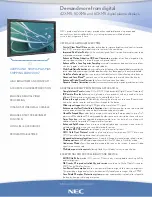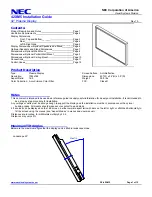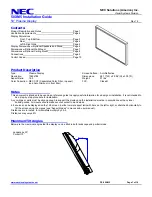
Connect terminal (2) of the transmitter to a suitable ground. All other cable leads must also be con-
nected to the transmitter and the same ground.
Switch in the transmitter via push button (5). Set the transmitter to "LEVEL I" via button (4). The
transmitter function is indicated via the flashing of the signal lamp (3). During the manufacture pro-
cess, the transmitter has been programmed to display the letter "F". Change the Code via Jumper
(7).
Switch, on the receiver via pushbutton (8). All
segments are indicated on the display (9) for a
short period of time. This indicates that the re-
ceiver is functional and that the batteries are
full. When switching on the receiver, the instru-
ment is automaticaly set to ”Automatic Mode”.
To change the sensitivity press the button 15.
Now, the "Manual Mode” is activated.The sen-
sitively range comprises 9 levels. The respecti-
ve sensitivity level, betweeen 1 and 9, is
changed and briefly displayed (9 + 9g) by pres-
sing buttons (15). If a selective and position-de-
pendant search has to be performed select the
selective mode by pressing the button 14 SEL.
Now touch the light-plastic sheathed cable with your receiver just before the location of the interrup-
tion. With button (15) "SENSE" set the sensitivity level so as to just receive the "F' signal. The signal
strength is indicated via the bargraph (9f). The display indicates the signal sent. Together with this
optical indication, an acoustic signal is also emitted from the receiver. If the signal strength increa-
ses further, the bargraph (9f) is illuminated one after the other in accordance with the signal
stength.
Now, using the lowest possible sensitivity level of the receiver, move along the cable and past the in-
terruption. The signal "F is not displayed any longer and the acoustic signal is not audible any more.
Repeat the same experiment on the other side of the wall.
For this, set the transmitter to "Level III" using switch 4. Thus, the range increases by a factor 5.
13
Fluke 2042
Users manual
2














































